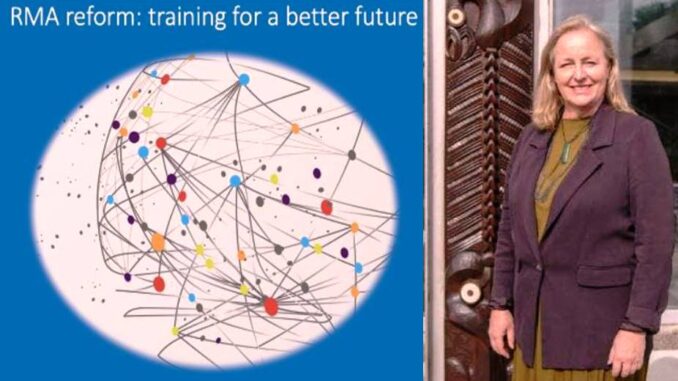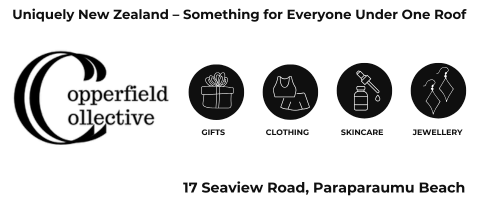
A Column by Kāpiti Coast District Mayor Janet Holborow
There’s no doubt that New Zealand’s natural environment is under significant pressure. Across the country, water quality and biodiversity are in decline, climate change is increasing the amount and severity of our weather events, and our population has grown by 1.5 million over the last three decades.
In Kāpiti, coastal erosion is a very real concern, we’re learning to live with more water, our population is expected to grow by 32,000 people over the next 30 years, and central government has required us to intensify our housing.
The country’s current resource management system has been in place since 1991, with incremental changes made almost annually ever since. Reform is very much needed to address the issues of today and those of tomorrow. Central government began a review in 2018, with their Panel concluding the Resource Management Act (RMA) should be replaced with new legalisation. Importantly, the new legislation should not add complexity, and should retain local voice and influence.
The RMA, amongst other things, considers how the environment should be protected and sustainably managed, and sets out how the consenting and building system works. Central government provides national direction which councils deliver at a local level. This currently translates into mechanisms such as our District Plan which, through consultation with our community, determines our desired environmental outcomes and puts rules in place to determine things such as land use, water takes, and subdivisions.
The Act is at times cumbersome and complex and the reforms seek to address this however, it’s not clear that the proposed Natural and Built Environment Bill (the main replacement for the RMA) and the Spatial Planning Bill will improve efficiency and effectiveness in the system.
There’s a lot to unravel in these draft legalisations but, just like Government’s other reforms, we’ve not been given much time to do so. This has been frustrating and difficult for local authorities given not just the size of the material to wade through, the raft of reforms in front of us and determining how they integrate with one another, but because they have a significant impact on local democracy and community voice.
Benefits the reform’s overall objectives will provide are easy to see, including the move to an outcomes-based approach to resource management and setting environmental limits. This provides a clear future-focus and one which seeks to ensure environmental bottom lines are maintained and, if implemented well, result in an overall improvement in the health of our environment.
However, the Bills don’t do enough to retain local democratic input in resource management processes. The role of councils would be diminished in the proposed system which consists of direction being set through a new National Planning Framework and local delivery determined by a Regional Planning Committee. There is slim detail on how this would reasonably work in practice – I have been left with more questions than answers after reading the proposed changes.
Local government has and needs to continue to have a key role in the system. Yet, alongside representatives from our neighbouring council counterparts, and iwi/hapū and central
government representatives, we’ll only be allowed one representative on our region’s planning committee.
These committee members will be empowered to make decisions without any specific authority from their appointing body or council, yet they’ll be shaping and determining how Kāpiti will grow, adapt, and change through a Regional Spatial Strategy and Natural and Built Environment Plan that will replace council’s District Plan.
Multiple plans will be tied into one all-encompassing plan. While conceptually this makes sense, one large plan across the entire region will be time consuming and costly to build, and very likely difficult to engage with, particular at an individual or local level. There’s no clarity around steps we could take if Council disagreed with the plan even though there’ll be an increased workload at our end to contribute to its development. The transition period could take years, during which there would be a high level of complexity and uncertainty.
Councils will then be obliged to resource, rate for, and implement the regional committee’s mandated decisions, without discussing it with our community first and with little influence other than local outcome statements. This gap between decision-making and implementation is problematic.
There is nothing more obvious than the recent devastating emergency events to highlight that one size does not fit all. Questions are being asked about where housing has been built and whether infrastructure has kept at pace with developments. Districts have different growth projections, geographical features, natural hazard risks, and diverse communities that need local solutions.
It’s difficult to see how we can “enable democratic local decision-making and action by, and on behalf of, communities”, as per the Local Government Act, when consultation and planning at a local level is removed.
We need to see accountability between central government, regional planning committees, councils, and their communities written into the proposed legalisation.
The timing of this reform and the Review into the Future for Local Government and Three Waters reform have not been aligned, yet they could have far-reaching implications for councils and communities across Aotearoa. Engagement on these reforms has often been hurried and hasn’t allowed sufficient time for us to discuss the proposals with our communities or iwi partners. Local expertise and voice have not had a platform to inform or shape the way forward.
These reforms are being delivered at pace, due in some part to the three-year government term. Not just the current government, but previous ones, have introduced legislation under urgency, bypassing or rushing consultative processes. The local government sector has indicated a preference for a four-year term which is one way this issue could be addressed.
High-speed legislative processes do not produce quality legislation. The risk is much higher when the legislation in question is intended to create fundamental system change yet local government, who will deliver the system on the ground, has not had enough opportunity to feed into the development phase.
These are just some of my thoughts on the resource management reform and I encourage you to read Kāpiti Coast District Council’s full submission available on the Council website: https://www.kapiticoast.govt.nz/your-council/forms-documents/submissions/#Natural-and-built














































